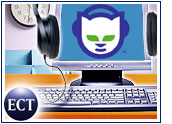
Napster’s choice of a headphone-wearing cat for its logo has turned out to be quite appropriate. The grand-tabby of all digital music services enters its second decade apparently intent on using up every one of a feline’s nine lives, with the latest reincarnation coming Monday in the form of a new business model.
The Los Angeles-based company — purchased by big box retailer Best Buy in late 2008 — cut its monthly subscription price to US$5 and now lets users stream music from its library of 7 million songs to their computers. The new plan also allows for five DRM-free song downloads per month, which can be ported to an MP3 player.
The previous lowest-priced offering from Napster was $12.95 per month for streaming services, and its Napster to Go plan charges a monthly fee of $14.95 for downloads to compatible devices and smartphones.
The music-loving public has largely become used to downloading songs to keep, own and play on portable devices like Apple’s iPod, Napster COO Christopher Allen acknowledged. The focus on streaming is meant to provide the foundation for Napster’s future success: a music distribution model that he’s calling the “celestial jukebox.”
“One of the things we’re bullish about, particularly with the relationship with Best Buy, is getting that unlimited on-demand streaming from the cloud to any number of Internet-connected consumer electronics devices,” Allen told the E-Commerce Times. “It’s not yet mainstream, but it’s clearly the trend. When you look at the combination of networks and devices connected to networks, we think, over time, the value placed on streaming subscription services will increase. It will take a period of years, so we go back to the hybrid model — giving them something they like today and understand, while adding more and more devices where they can stream on demand.”
The New Chapter in the Napster Story
The new business plan — and the Best Buy acquistion — are just the latest stages in the evolution of Shawn Fanning’s groundbreaking file-sharing application, first developed in his Northeastern University dorm room in 1998. Record companies probably have Fanning’s face and the Napster cat plastered on dartboards throughout their offices, but there is no denying that the company helped launch epochal changes in the way music is distributed and consumed.
Public release of the Napster technology in 1999 resulted in more than 26 million users within two years. However, lined up on the other side of the then-emerging digital battleground were record companies and their lobbying arm, the Recording Industry Association of America, along with certain vocal anti-file-sharing artists, like Metallica and Dr. Dre, all claiming copyright violations enabled by the Napster service. A federal court agreed with those claims in 2001, forcing the company to shut down and its previous owners to declare bankruptcy.
Roxio revived the service in 2003, and Napster then flirted with various subscription models and advertising plans before ending up with Best Buy. COO Allen believes that the new $5 plan can help the company hang on until the notion of streaming music floating on wide-area broadband networks to a variety of devices becomes mainstream.
“The vision of Napster remains unchanged in getting consumers unlimited access to the universe of music — even when Shawn Fanning first started, and the legalities and all that,” Allen said. “When you look at the history of Napster, we’ve done a good job of navigating the waters. Lots of smaller companies and larger companies have come and gone in digital music, but I think we’ve had that strategic focus directly with the consumer. There’s been great movement in the last 10 years, with getting rid of DRM, to giving consumers flexibility, all the while progressing toward that celestial jukebox in your living room, your car, in PCs, on phones and devices — that’s really nirvana, and this [new plan] is the next step towards that experience.”
Napster’s Outlook
Can Napster claw its way to survivability in an iTunes-iPod world?
“It’s the quintessential pioneer in digital media,” IDC Digital Media Analyst Danielle Levitas told the E-Commerce Times. Without Napster, “we might still be waiting for DRM-free downloads. Streaming isn’t, obviously, new. It’s been at the heart of Rhapsody’s business models for a long time. To me, this is another variant of that service, and it is a better value from the pay-per-download model. But it may be too little, too late.”
Apple won’t likely feel much pressure from Napster’s $5 streaming plan, Levitas said, but the heat is now on Best Buy to market the model and use its new digital music acquisition to help sell subscriptions and devices.
“If Best Buy can’t figure out a way to make digital music work and be a leader in this space over the next three years or so, then shame on them,” said Levitas. “They have the largest retail footprint, and Napster should be one of those services that can help open that door. It doesn’t start and stop with music — it’s digital media in general, with music and online games and movies.”
Napster’s Allen is also counting on Best Buy’s cavernous stores and its Geek Squad to help his company grow beyond its current 700,000 subscribers.
“There’s a synergy between music and digital entertainment experiences and consumer electronic devices — a symbiotic relationship,” he said. “With Best Buy, music services can drive some consumer electronics sales. We haven’t made any projections, but when you look at the [$5] offer coupled with marketing aspects from Best Buy — from its Sunday circulars in newspapers to BestBuy.com, in-store merchandising and signage — there’s bundling opportunities. With all the customer touch points — online and in the store with all the blue shirts, we’re excited about it.”






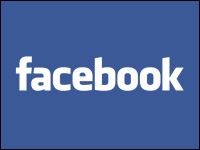

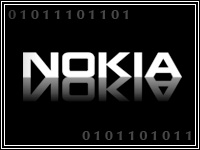

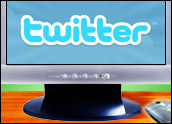
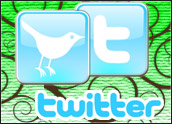











































Social Media
See all Social Media